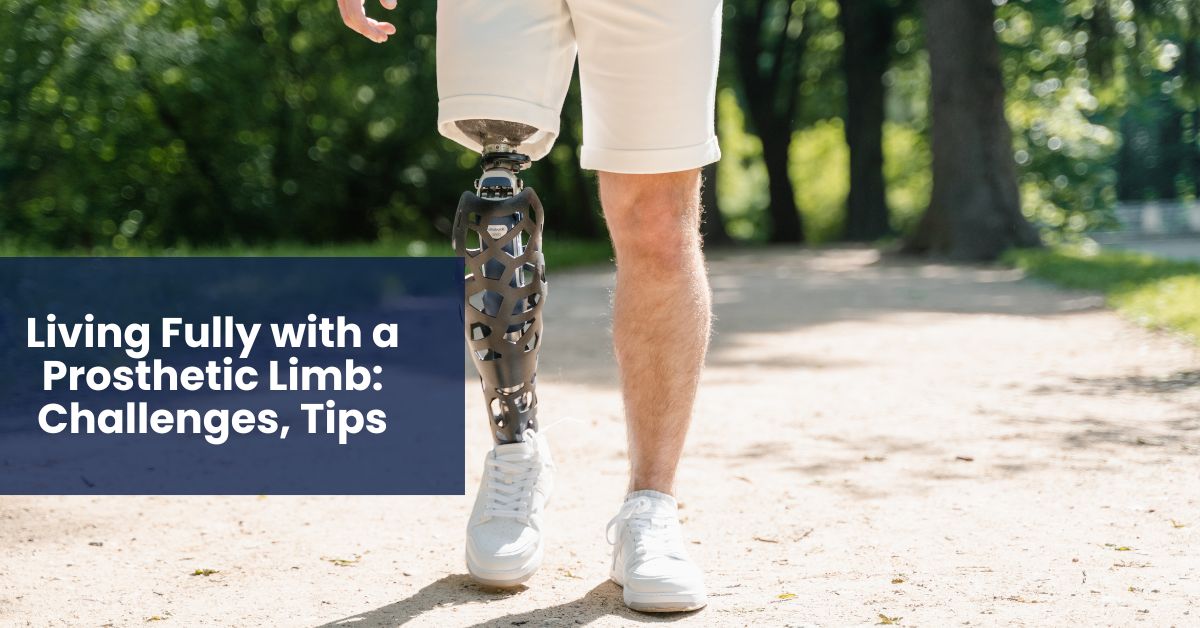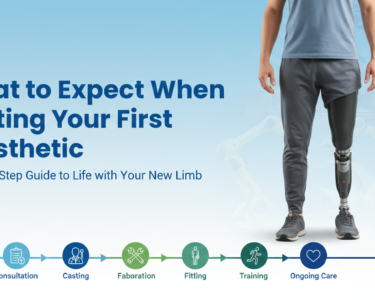Living with a prosthetic limb brings about a journey of rediscovery. It’s not just about replacing a limb—it’s about rebuilding confidence, learning new ways to move, and redefining your idea of a “normal” life.
Whether you’ve just started using a prosthesis or have been using one for years, this article is meant to be a practical, understanding guide. Let’s explore the day-to-day challenges, small victories, and real-world tips that can help you live more fully with a prosthetic limb.
The Emotional Transition: It’s More Than Just Physical
Adjusting to a prosthetic isn’t just about learning to walk or grip again. The emotional side of this journey can often be just as challenging.
You may experience:
- Frustration when your limb doesn’t fit quite right
- Embarrassment in social settings
- Anxiety about how others perceive you
- Moments of grief over your limb loss
These emotions are completely valid. And you’re not alone. Many people find that the emotional adjustment takes even longer than the physical one—and that’s okay.
Tip:
Give yourself time. Speak to others who’ve been through it. Support groups (online or local) can be incredibly helpful. Even just talking to someone who understands your experience can lift a heavy weight off your shoulders.
Early Challenges with a Prosthesis
The first few weeks or months can feel like a mix of progress and setbacks. Some common issues include:
- Discomfort or pressure pain from the socket
- Skin irritation or blisters, especially in warm climates
- Learning balance and coordination with a new center of gravity
- Mental fatigue from constantly focusing on each movement
You might even wonder, “Is this really going to get better?” The answer is—yes. But it takes consistency, patience, and support.
Quick Fixes That Help:
- Always check the skin around your residual limb at the end of the day.
- Use a thin liner or sock to ease discomfort—your prosthetist can recommend the right ones.
- Don’t ignore discomfort. Report even minor issues to your prosthetist; small adjustments can make a big difference.
Daily Life with a Prosthetic Limb: Routines That Make It Easier
A prosthetic limb is a tool—and like any tool, you’ll get better at using it with time and routine. Here are some practical tips for navigating day-to-day life more comfortably.
Hygiene Matters
- Clean your limb and liner daily using mild soap and warm water.
- Avoid moisturizers before wearing the prosthesis, as they can cause slipping.
- Dry your skin thoroughly and inspect it for any pressure marks or irritation.
Dress Smart
- For lower limb prosthetics, choose shoes with consistent heel heights.
- Avoid loose clothing that might interfere with your prosthesis.
- Compression garments or sleeves can help improve fit and comfort.
Move Naturally
- Practice small activities like climbing stairs, standing from a chair, or walking on uneven ground.
- Use handrails or walking aids if needed—there’s no shame in support tools.
- Physical therapy can help re-train your muscles for smoother movement.
Regaining Independence: You’re in Control
Living fully also means living independently. Whether it’s going back to work, taking care of your home, or running errands—small steps toward independence rebuild confidence.
Here’s how:
- Break tasks into smaller steps. If standing for long periods is hard, sit while cooking or folding laundry.
- Ask for modifications. At work, request adaptive equipment if needed.
- Practice self-care—eat well, stay hydrated, and rest when your body tells you to.
Home Tips:
- Use non-slip mats and grab bars in the bathroom.
- Rearrange furniture to create wider walking paths.
- Use stools or chairs with armrests for easier sitting and standing.
Exercise & Activity: Get Moving Again
Physical activity helps strengthen the muscles around your prosthetic, improves your balance, and keeps your overall body healthy.
Depending on your type of prosthetic and your doctor’s advice, you can try:
- Walking or treadmill sessions
- Swimming with waterproof prosthetics
- Cycling or using stationary bikes
- Light strength training with guidance
Tip:
Work with a physical therapist who has experience with amputees. They can design a safe, customized plan for your body and goals.
Traveling with a Prosthesis
Yes, you can travel—and enjoy it too!
- Pack spares. Bring extra liners, socks, and any tools you might need for minor adjustments.
- Let airport staff know about your prosthesis before security checks.
- Take breaks during long trips to rest your limb and prevent swelling.
Many prosthetic users say that with the right planning, travel becomes easier and more enjoyable over time.
Staying Mentally Strong: It’s a Lifelong Process
No matter how long you’ve been using a prosthesis, there may still be emotional ups and downs. That’s completely natural.
You might feel discouraged some days—maybe your prosthetic is uncomfortable, or you’re just tired of the routine. That’s when mental resilience really matters.
What Helps:
- Journaling or writing about your progress
- Celebrating small milestones (like walking farther than before)
- Talking openly with friends or loved ones
- Seeking professional counseling when needed
Don’t underestimate the importance of mental health in this journey.
Real Talk: Common Myths and Truths
| Myth | Reality |
| You’ll always be in pain | A well-fitting prosthesis should not cause chronic pain. If it does, adjustments are needed. |
| You can’t live an active life | Many prosthetic users run marathons, hike, swim, and more. Activity is possible—with the right mindset and tools. |
| Everyone will stare | In truth, most people are more curious than judgmental. Sharing your story can change how they see prosthetics. |
| You’ll feel ‘whole’ again immediately | Acceptance takes time, and that’s okay. Healing is not just physical—it’s emotional and mental too. |
Stories of Strength: You’re Not Alone
Every prosthetic user has a unique journey—but what ties them together is resilience.
From war veterans and athletes to children and everyday individuals, countless people have not only adapted to prosthetic limbs but thrived with them.
You are capable of the same.
Redefining What It Means to “Live Fully”
Living fully with a prosthetic limb isn’t about being perfect. It’s about being present, active, and confident in your journey. It’s choosing to move forward, no matter the pace. It’s learning, adjusting, and celebrating each milestone—big or small.
Whether you’re navigating your first steps or exploring new goals years later, know this: You are strong. You are adaptable. And you are not defined by what you’ve lost—but by how you rise every day. Over time, many people find that their pain becomes more manageable and their confidence, freedom, and comfort improve as well.
Disclaimer:
This content is for informational purposes only and should not replace professional medical advice. Always consult your prosthetist or healthcare provider for personalized recommendations.








